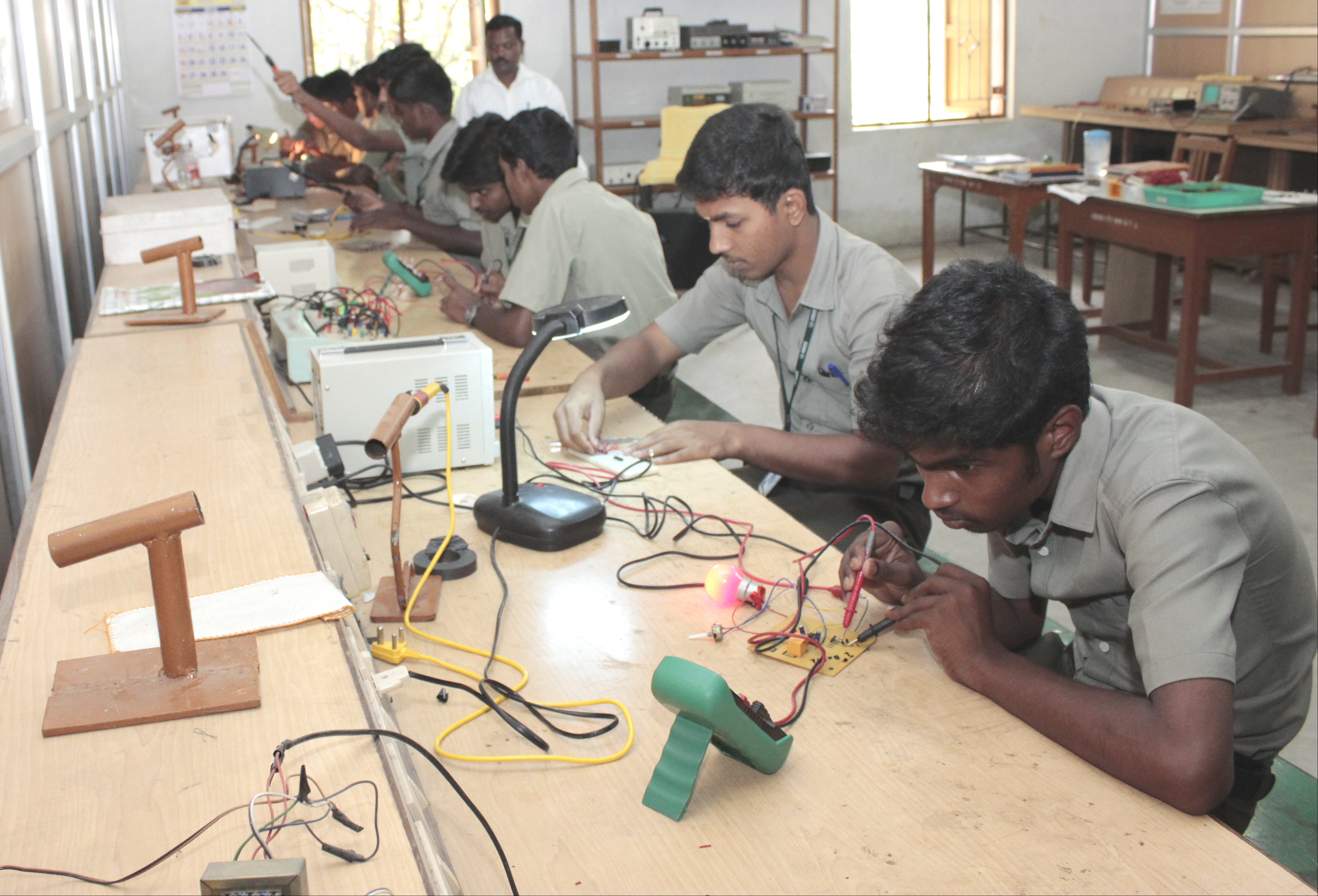
ELECTRONICS MECHANIC- LEARNING OUTCOMES – ITI
FIRST YEAR:
1. Perform basic workshop operations using suitable tools for fitting, riveting, drilling etc. observing suitable care & safety following safety precautions.
2. Select and perform electrical/electronic measurement of single range meters and calibrate the instrument.
3. Test & service different batteries used in electronic applications and record the data to estimate repair cost.
4. Plan and execute soldering & de-soldering of various electrical components like Switches, PCB& Transformers for electronic circuits.
5. Test various electronic components using proper measuring instruments and compare the data using standard parameter.
6. Assemble simple electronic power supply circuit and test for functioning.
7. Install, Configure, interconnect given computer system(s) and demonstrate & utilize application packages for different application.
8. Construct, test and verify the input/output characteristic of various analog circuits.
9. Plan and construct different power electronic circuits and analyse the circuit functioning.
10. Select the appropriate opto electronics components and verify the characteristics in different circuit.
11. Assemble, test and troubleshoot various digital circuits.
12. Simulate and analyze the analog and digital circuits using Electronic simulator software
13. Identify , place, solder and desolder and test different SMD discrete components and IC’s package with due care and following safety norms using proper tools/setup
14. Construct and test different circuits using ICs 741 Operational amplifiers & ICs 555 linear integrated circuits and execute the result.
 SECOND YEAR:
SECOND YEAR:
15. Measure the various parameters by DSO and execute the result with standard one.
16. Rework on PCB after identifying defects from SMD soldering and de-soldering.
17. Construct different electrical control circuits and test for their proper functioning with due care and safety.
18. Prepare, crimp, terminate and test various cables used in different electronics industries.
19. Assemble and test a commercial AM /FM receiver and evaluate performance.
20. Test, service and troubleshoot the various components of different domestic/ industrial programmable systems.
21. Execute the operation of different process sensors, identify, wire & test various sensors of different industrial processes by selecting appropriate test instruments
22. Plan and carry out the selection of a project, assemble the project and evaluate performance for a domestic/commercial applications.
23. Prepare fibre optic setup and execute transmission and reception.
24. Plan and Interface the LCD, LED DPM panels to various circuits and evaluate performance.
25. Detect the faults and troubleshoot SMPS, UPS and inverter.
26. Install a solar panel, execute testing and evaluate performance by connecting the panel to the inverter.
27. Dismantle, identify the various parts and interface of a cell phone to a PC. Estimate and troubleshoot.
28. Check the various parts of a LED lights and stacks and troubleshoot
29. Identify, operate various controls, troubleshoot and replace modules of the LCD/LED TV & its remote.
ELECTRONICS MECHANIC CAREER PROGRESSION PATHWAYS – ITI
• Can join industry as Technician and will progress further as Senior Technician, Supervisor and can rise up to the level of Manager.
• Can become Entrepreneur in the related field.
• Can appear in 10+2 examination through National Institute of Open Schooling (NIOS) for acquiring higher secondary certificate and can go further for General/ Technical education.
• Can take admission in diploma course in notified branches of Engineering by lateral entry.
• Can join Apprenticeship programme in different types of industries leading to National Apprenticeship certificate (NAC).
• Can join Crafts Instructor Training Scheme (CITS) in the trade for becoming instructor in ITIs.
• Can join Advanced Diploma (Vocational) courses under DGT as applicable.
ELECTRONICS MECHANIC JOB ROLE – ITI
Electronics Mechanic; Electronic Equipment Mechanic repairs electronic equipment, such as computers, industrial controls, transmitters, and telemetering control systems following blueprints and manufacturer’s specifications and using hand tools and test instruments. Tests faulty equipment and applies knowledge of functional operation of electronic units and systems to diagnose cause of malfunction. Tests electronic components and circuits to locate defects, using instruments, such as oscilloscopes, signal generators, ammeters and voltmeters. Replaces defective components and wiring and adjusts mechanical parts, using hand tools and soldering iron. Aligns, adjusts and calibrates testing instruments. Maintains records of repairs, calibrations and test.
ELECTRONICS MECHANIC Entry Qualification & Course Durations – ITI
• Passed 10th class examination with Science and Mathematics or its equivalent.
• 2 years.